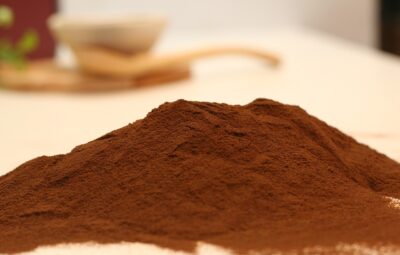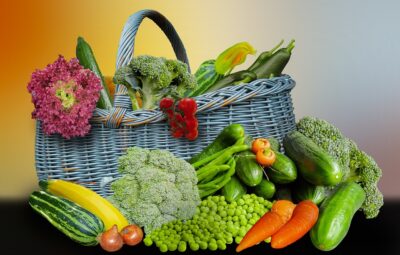It’s important to keep in mind that while keto and paleo both involve low-carb eating, the goal of each diet is different. The keto diet centers largely on reaching certain macronutrients to encourage the body to use fat as its main energy source instead of carbohydrates. The paleo diet preaches a totally different mindset. Rather than worrying about the exact amounts of macronutrients that should be consumed, the paleo diet recommends a much simpler notion: eating as your prehistoric ancestors would have.
But which one is right for you? This is an analysis of two common dietary habits and how to decide which one is right for you.
What Is the Paleo Diet?
The paleo diet, also known as the “caveman diet,” is an approach to eating that is based on the types of foods consumed by early humans, believing it to create an optimal health condition.
The philosophy backing the paleo diet is that current food production, processing, and delivery methods are damaging to human health.
If you eat in a similar way to Paleolithic hunter-gatherers, the biological operations of your body will be optimized, ultimately leading to better digestion and general health.
The Paleo diet gets rid of grains, beans, refined sugar, and most dairy products.
The main foods permitted on the paleo diet include:
- Meat and fish
- Eggs
- Nuts and seeds
- Fruits
- Vegetables — except corn, which is a grain
- Selected fats and oils, such as coconut oil, olive oil, avocado oil, lard, tallow, ghee/butter
- Minimally processed sweeteners, including raw honey, maple syrup, coconut sugar, raw stevia
For many people, “paleo” involves more than just what they eat.
The paleo philosophy is highly invested in lifestyle habits, the environmental repercussions of dietary decisions, and overall health of the body.
What Is the Keto Diet?
The majority of cells in the human body tend to find glucose from carbohydrates the best source of energy.
Ketosis is when the body gets its energy from breaking down fat instead of carbohydrates for the purpose of performing its typical operations.
The keto diet works by attempting to trigger ketosis by changing the ratio of carbs, proteins, and fats in someone’s diet.
The keto diet macronutrient breakdown looks something like this:
- Fat: 65-90%
- Protein: 10-30%
- Carbohydrates: less than 5%
In contrast to a regular diet, the keto diet has a much higher fat intake, moderate levels of protein, and a limited number of carbs.
The goal of this diet is to get your body into a state of ketosis, allowing it to effectively burn fat. It is essential that macronutrient consumption is closely monitored, or else you may upset your metabolism’s ketosis balance.
The keto diet has become trendy recently because of its potential to enable weight loss and facilitate better regulation of blood sugar.
How Are They Similar?
Both lifestyles vary significantly; however, they both advocate for fewer carbs, forbid grains and consist of plenty of meat and fish.
Low Carb
The Keto diet requires very low carbohydrate consumption, usually below 5% of calorie intake or less than 20 grams of net carbs.
Paleo is not a diet that focuses on counting macros, but due to the reduced number of carbs that are allowed, it is generally considered to be a low-carb eating plan. When adhering to a healthy paleo meal plan, your carbohydrate consumption would constitute between 25% and 35% of your total calorie intake in a day.
Grain-Free & Legume-Free
Paleo is characterized by the exclusion of all grains, beans, and legumes.
There are no foods that are completely off-limits on a ketogenic diet as long as you meet your daily nutritional objectives. It may be easier to stay within the keto guidelines on carbs by limiting your intake of foods with a high-carb content, such as grains, bread, potatoes, and starchy veggies. This means that if you follow the keto diet, it would naturally be grain and bean free.
Higher Protein
A higher amount of protein is naturally ingested when you eat the specific kinds of food included in each diet.
Most Paleo meals have meat and fish as the main component, which is quite significant since the hunter-gatherer way of life included a great deal of these types of foods.
The keto diet is not typically meant to include a lot of protein, however, consuming meats and seafood can be a great way to get quality, low carb proteins to help you reach your goals.
What is the Difference Between Paleo and Keto?
The main difference between the two diets lies in the types of food consumed, the balance of macronutrients needed, and the purpose each diet is meant to serve.
Allowed Foods
Strict regulations have been established to decide which foods are considered “paleo-approved” and which ones are not, and they don’t always compare to broad food categories. As an illustration, white potatoes are not included, but sweet potatoes are permitted. Good fats such as olive oil may be consumed while processed and refined vegetable oils are not allowed.
In contrast, the keto diet is quite lenient with regard to the kind of food you can eat, as well as its quality. Success solely depends on hitting your keto macros.
Processed Foods
Paleo has stringent requirements for the quality of the edibles one can select. It is recommended to choose proteins that come from grass-fed or ethically-caught sources, organic ingredients are the ideal choice, and processed foods should be limited if possible. Due to these regulations, a paleo diet encourages a lot of healthy foods.
The keto diet does not provide specific instructions regarding the quality of food that should be consumed. Though some individuals may opt for a completely natural keto diet, it does not necessitate the exclusion of processed foods. A lot of folks will still go for processed meats, cheese, and other fatty foods in order to reach their macro-nutrient targets. Consequently, one has to be mindful of their nutrition consumption if they choose to follow the keto diet, or else it might lead to an increased intake of saturated fats, low dietary fiber, and a lack of overall good nutrition.
Added Sugar
Due to the limited carbohydrate intake, the keto diet is generally no-sugar – apart from the synthetic sweeteners, which many people on the keto diet could consume a lot of.
In contrast, Paleo permits specific sugars like maple, coconut sugar, and honey.
Dairy
Aside from milk, other dairy products are widely popular among those following the keto diet since they are high in fat and low in carbohydrates.
With paleo though, all dairy is forbidden. This is a major difference between the two plans.
Macro Ratio
The paleo diet concentrates on which foods should be consumed instead of what the macro proportions should be.
On the other hand, there is the ketogenic lifestyle. The keto diet specializes in consuming precise and intense macronutrients so that you can convince your body to use fats as a source of energy rather than carbohydrates.
In addition, while both ways of eating involve reducing carbohydrate consumption, the primary focus of their macronutrient compositions is substantially distinct.
Paleo Focuses More on Ideology While Keto Focuses on Macronutrients
The principles behind the paleo and keto diets differ, with the paleo diet having an underlying message while the keto diet lacking any ideology.
The focus of the paleo diet is not just on the diet, but also on making lifestyle changes. This sentence encourages people to not only follow a particular style of diet, but also to make sure that they are engaging in regular physical activity and staying mindful in their daily activities.
Incorporating brief, higher energy workouts into your routine is a major component of the paleo lifestyle. It is believed that engaging in this kind of exercise can help to decrease the tension that might come along with extended workouts.
The paleo diet recommends utilizing yoga and meditation to minimize stress.
When combined with dietary habits, these changes in lifestyle are aimed at enhancing the physical and mental wellbeing of oneself, leading to an improved state of health.
The paleo diet is quite specific, yet it does not give any attention to the amounts of carbohydrates, proteins, and fats that are consumed. You can eat an unlimited amount of protein, fat, and carbs if they come from the specified list of approved foods.
The ketogenic diet does not require a certain set of beliefs or lifestyle practices to be followed. The primary concentration is on how the macronutrients are divided, although it does promote selecting nutritious food sources.
Individuals can make additional changes to their lifestyle in addition to the keto diet, but these alterations are not part of the dietary plan itself.
Paleo Allows for Whole-Food Carbs
Although the paleo diet restricts some kinds of carbohydrates, it does not necessarily fit the same definition of a low-carbohydrate diet as the keto diet.
One could theoretically have a diet that is very high in carbohydrates, as long as one is picking foods which fit the components of the paleo diet. No required macronutrient focused on under the paleo eating habits.
Since grains, processed sugars and beans are not allowed, the choices for carbohydrates on the paleo diet are constrained, but not completely removed. Eating Paleo permits you to enjoy carbohydrates from different sources of whole foods, such as fruits, vegetables, and unprocessed sugars.
In contrast, the keto diet excludes any foods that contain high levels of carbohydrates, this includes starchy vegetables, the majority of fruits, grains, sugars and the majority of legumes.
Given that the total carbohydrate consumption should stay underneath a certain limit to preserve ketosis, numerous high-carb sustenances, regardless of their origin, just don’t integrate into a keto diet.
Keto Allows Dairy and Some Soy Foods
Keto permits, even encourages, eating many dairy foods. Many keto diets rely on high-fat dairy products such as heavy cream, butter, and plain full-fat yogurt.
It is not advised to consume dairy products like milk and ice cream when adhering to the keto diet due to their excessive carbohydrate content in relation to their low fat content.
It is okay to have soy foods such as tofu, tempeh and soybeans on the keto diet so long as they are within the pre-determined proportions of nutrients. Soy milk, however, is usually discouraged.
Rather than permitting any soy, the Paleo diet does not allow for it and severely restricts most dairy products.
The paleo diet allows grass-fed butter as the only dairy product. Thoughts are divided among those in the paleo community as to if this allowance is really consistent with paleo thinking.
Furthermore, the paleo diet frowns upon including any foods derived from soybeans, since they are classified as legumes.
Which Diet Has Better Results?
When considering diets, the main aim of many people is to figure out “What diet can help me shed the most weight?” Unfortunately, the response to this is not as obvious as it may seem. Everybody loses weight in different ways and no single diet plan will produce the same results for everyone. This is what we can inform you about both of these nutritional regimens.
1. As long as you control your calories consistently you will lose weight.
Decreasing carbohydrates in one’s diet is frequently associated with instantaneous weight diminishment. In some cases, the shift in body weight is caused by a modification of fluid retention – for each gram of carbs, you need to keep 2-3 grams of water.
It’s thought by many that if you force your body to utilize its fat reserves as energy, you are likely to burn more fat. Nevertheless, ketosis involves utilizing the fats from the food that you eat for energy. If you are consuming a significant amount of calories, your body will not need to access your fat reserves as much, which can inhibit weight loss and potentially cause weight gain.
Switching up your food choices will not result in weight loss unless those decisions cut down your total caloric intake.
At the moment, there is no evidence that keeping to a ketosis diet or restricting carbohydrates has more of an impact on weight loss than controlling portion sizes. If you want to slim down while following the Keto or Paleo diet, you still need to watch your calorie intake.
2. Being too restrictive can do more harm than good.
Too strict of a diet does not usually result in long-term success. Both paleo and keto can be limiting to some people, because they exclude certain entire categories of food and have stringent rules.
The most beneficial approach to dieting is not “What is the quickest way for me to shed pounds?” but rather “How can I create a lasting lifestyle to reduce my weight and maintain it?”
Selecting the strategy that you believe you can remain committed to.
3. Food preference matters.
Another strong consideration is food preference. It’s improbable that you will maintain your dietary habits unless you are actually enjoying the food.
If you like the food items typical of the ketogenic diet, and won’t feel deprived without carbs, then the ketogenic diet may be ideal for you. On the flip side, if you do not prefer more calorie-dense, fatty dishes and would rather have more of a focus on vegetables and meats, paleo should be your go-to.
The Bottom Line
The ketogenic diet is distinguished by an excessive amount of fat and an incredibly limited quantity of carbohydrates. Losing weight and stabilizing blood sugar levels may be attainable by using this technique.
The paleo diet places importance on consuming natural foods that are presumed to be able to be accessed by humans during the Paleolithic period. It also encourages exercise and other wellness practices.
Both eating plans could lead to better health if properly organized.
However, available data extending beyond the short-term to look into the safety and effectiveness is insufficient, and some of the guidelines of these diet plans can be challenging to adhere to.
Most individuals find the paleo diet to be a superior option because of its greater level of dietary freedom compared to the keto diet, which makes following it for an extended amount of time more feasible.
In the long run, the diet that is most effective for your needs is the best decision.







